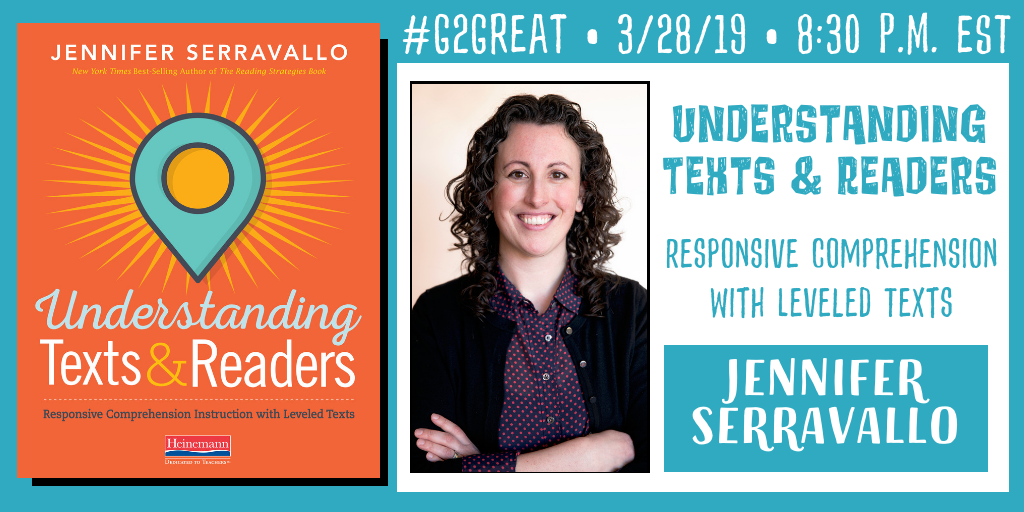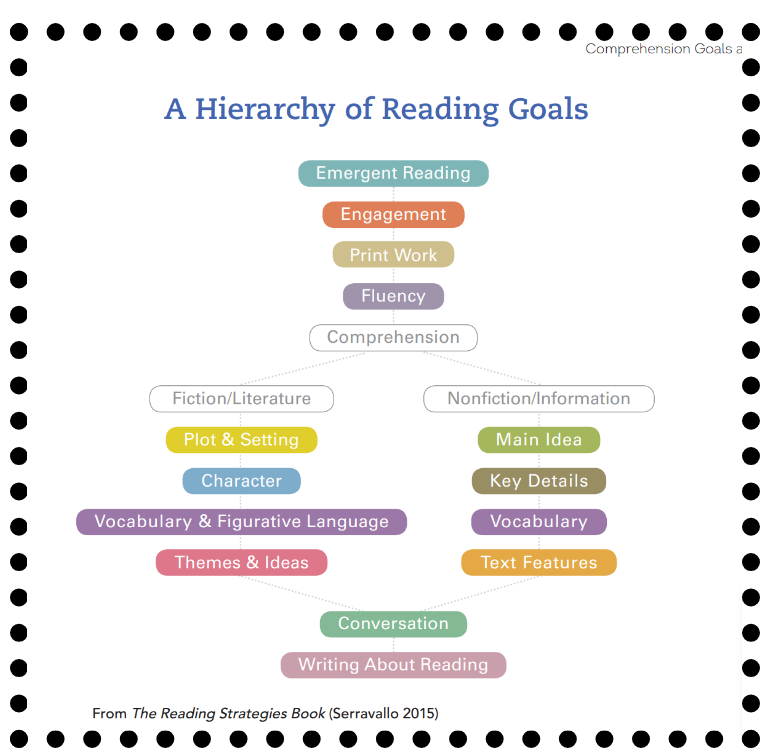By Fran McVeigh
Back in March the #G2Great community hosted a chat featuring Jennifer Serravallo and her book, Understanding Texts & Readers: Responsive Comprehension with Leveled Texts. Here is that Wakelet. Previous bestsellers are Reading Strategies (2015) and Writing Strategies (2017). (Writing Strategies Chat)
Last week I had the honor to be at Hamline University in Minneapolis for Jennifer’s three hour keynote over this book with #G2Great friend, Kathryn Hoffmann-Thompson. Three hours for this topic…not nearly enough to cover everything in the book but so much better than a shared presentation or just an hour for surface coverage.
A Memorable Opening
Jen opened by sharing her “Identity Web” and then gave us about five minutes to begin ours. Identity webs are a favorite activity from Sara Ahmed, author of Being the Change. This was a practical and purposeful introduction.
I didn’t capture a picture of Jennifer’s Identity Web but I do remember the dancing, ballet and at home. It captured a part of my mind that made a new connection and added to my picture of her.
As I tried to think of ideas and symbols for my web, I thought about a) this activity with Sara at NCTE and b) the fact that many of my friends comment on the conversations I have with strangers on the streets of New York City because of the college colors I wear. That college identity is even more poignant because of this story of Sara’s. Sara in a city separated by 90 miles from me on this memorable date. The possibilities for my web were easy to generate!
Classroom Connection
Create an Identity Web before school begins. Consider the aspects of your life that have shaped you. Share your web with your class. Provide time for your students to create an Identity Web.
ACTION: Use the identity webs of your students to audit your classroom libraries and ensure all students are represented.
And then the WHY.
Research
Name Dropping
Fast and Furious
Hattie
Sulzby
Fountas and Pinnell
Where do we start with Goals?
- It is all about comprehension.
- A five minute assessment conference
We watched a video of an assessment conference that involved a lot of listening. It looked and sounded easy. The hard part was listening and thinking about what the student “could do”. As a first grader this student was working on the goals at the top. Any of them could have been choices – depending on the conversation. A student well matched to a text. Retelling. Listening to what the student is paying attention to. Setting a goal for three weeks, working the goal, and meeting again with the student to figure out next steps.
ACTION: Five Minute Assessment Conferences
RESPONSIVE
A student.
Well matched to a text.
Retelling.
Listening to what the student knows.
What can the student do? What might be a next step? Plan, execute the plan, and revisit in three weeks.
What is the beauty of this work?
Simple goal (Not a SMART goal)
Focus on “Can Do” (Not deficits)
Short Term (Not a lifetime sentence)
Responsive (Not searching for a program)

